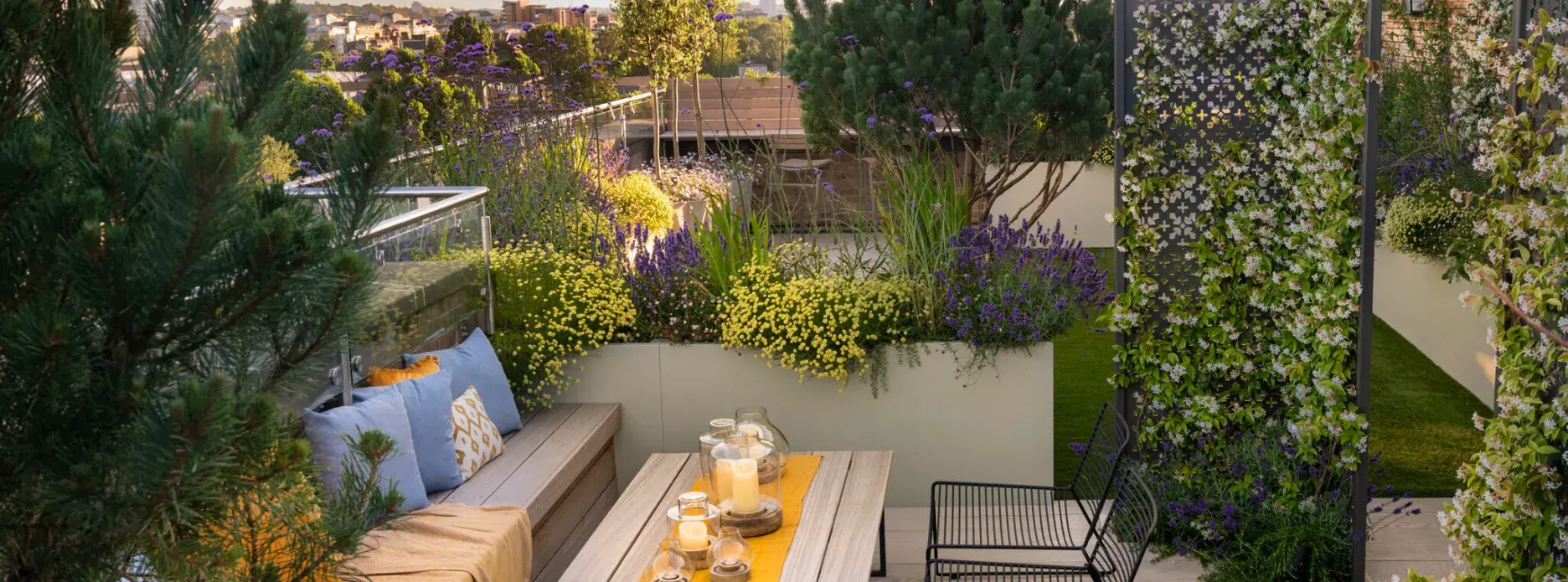MIllboard knowledgebase
Discover Highly Slip-Resistant Composite Decking

Article Highlights
When planning a project, choosing the right decking materials is essential for both safety and style. Whilst traditional timber decking offers a classic look, it often struggles with issues like moisture damage, mould, and slippery surfaces, especially in wet climates like the UK.
Composite decking boards provide a low-maintenance and durable alternative to timber, designed to overcome these challenges and offer a safer, more reliable solution for your outdoor space.
This guide will explore the key benefits of composite decking with high slip-resistance and why it’s the ideal choice for modern gardens and commercial terraces.
Benefits of Highly Slip-Resistant Composite Decking
Enjoying your outdoor space shouldn’t compromise your or anyone else’s safety. However, the problem with traditional wooden decking is that it can become very slippery in wet conditions, unfortunately frequent in the UK.

And it isn’t just wet weather that poses a hazard: traditional timber decking is prone to algae, mould and fungal growth, which create a slippery layer on the surface. Even conventional composite decking, which uses wood fibres, can suffer from these problems, as they often aren’t completely resistant to biological growth. In contrast, Millboard decking is made from entirely wood-free materials. The non-porous surface resists organic matter and provides exceptional traction.
Keep your family and guests safe by choosing Millboard decking boards with excellent slip-resistance. Explore the benefits:
- Reduces slip hazards even in wet conditions.
- Safer to use with swimming pools, ponds and water features.
- Moisture- and mould-resistance helps the decking maintain its grip with minimal upkeep.
Slip Resistance of Composite vs. Traditional Timber Decking
There are several reasons why composite decking is a better choice for slip resistance than timber. Millboard tests the slip resistance of their composite deck boards using a standardised pendulum test. A slip resistance above 36 poses a low slip risk.
Millboard’s Enhanced Grain Decking far exceeds these requirements, earning a score of 49-60 in dry conditions and 36-42 when wet. Even on a slope, Millboard's slip resistance significantly outperforms timber and generic composite decking brands.
Conversely, timber decking without anti-slip inserts will present slip hazards in wet conditions and may only just meet recommendations set by the Health and Safety Executive (HSE). Micro profiles and treated timber with grit strips can greatly improve traction. Untreated or smooth decking boards are particularly risky, especially in shady, high-moisture areas. Moreover, timber becomes extremely slippery if algae or mould grow on the surface.
What Affects the Slip Resistance of Wooden Decking?
- Moisture: Wet wood becomes 35% more slippery and then takes a significant amount of time to dry.
- Mould, Moss and Algae: Organic growth creates a slick layer which can be extremely dangerous.
- Wood Treatment: Anti-slip treatments and moisture-resistant coatings help avoid the slip hazards associated with traditional timber decking.
- Grooves: Deck grooves can create extra friction to enhance the safety of outdoor spaces.
Key Features of Millboard’s Decking
Millboard composite decking has excellent slip resistance, even when wet. This gives you peace of mind while spending time with your loved ones outdoors. The decking’s reassuring grip comes down to several factors, including the unique Lastane® layer and the impermeable core.
Decking Surface and Texture
Most decking boards, particularly timber or conventional composite decking, utilise grooves or grit strips to enhance slip safety. However, Millboard uses an elastomer layer, which is strong, supple, and has a grippy, rubber-like surface. Due to its high traction, you can achieve the appearance of freshly milled and stained timber without the risks associated with it.
Millboard mould their composite decking boards from real oak. The texture and hand-finished colour helps them accurately mimic the natural nuances of wood grain while optimising performance.
See the texture for yourself, order up to three free samples
Decking Material and Composition
The key to safe and low-slip decking is the rubber-like elastomer coating. However, the innovative wood-free core also helps it avoid moisture penetration and mould growth, which could otherwise contribute to unnecessary slip hazards. Even when wet, Millboard composite decking boards are still significantly less slippery than timber, and the low-absorbency materials allow them to dry much faster.

Why Choose Millboard Composite Decking?
Unlike traditional wooden decking, composite decking boards are low-maintenance, durable, and highly resistant to rot and warping. They’re an excellent low-risk option for your hospitality venue or residential garden. Millboard’s composite boards are available in a variety of colours to suit your decking project. Matching woodgrain edging, composite fascia boards, corner trims and headless fixings help achieve a seamless, high-quality finish, even for curved decking designs.
Our Plas-Pro or Duospan subframe systems and Self-Levelling Pedestals can be tailored to various substrates from concrete to lawn, or even sloped gardens. We have a wide network of approved installers to call on to make your dream decking a reality.
If you’re looking for safer, low-slip decking that doesn’t sacrifice visual appeal, you’ll find it here at Millboard. Explore the different styles and colours available and order your free samples with free delivery.
Frequently Asked Questions
How do you preserve a decking’s slip-resistance
To maintain slip resistance on composite decking, clean it regularly with soapy water and a soft-bristle brush to remove dirt, grease, or algae. Ensure proper drainage to avoid standing water, and clear any debris from gaps between boards. Clean oil or grease spills from dining or cooking areas immediately, and opt for enhanced traction decking, such as Lasta Grip, for the highest slip resistance.
What makes composite decking highly slip-resistant?
Some composite decking brands, such as Millboard, are highly slip-resistant due to their textured components. These provide better traction than traditional decking options, even in wet or icy conditions. Other materials, such as wood or aluminium, typically use grooved or embossed patterns to enhance safety, but these may lack the appeal and safety features of Millboard’s wood-effect decking.
Can highly slip-resistant decking still look stylish?
Yes, Millboard decking, with its high slip resistance, comes in a variety of stylish designs, colours, and finishes that resemble natural timber. Millboard moulds their Enhanced Grain, Weathered Oak and Lasta Grip boards from real wood, which allows them to look true-to-life. For a striking exterior, Modello decking can offer over 50 laying patterns in two distinct styles and ten vibrant shades.
How do I clean composite decking to maintain its slip-resistance?
Clean composite decking with warm, soapy water and a brush to remove dirt and debris. You can use a pressure washer on Millboard decking to remove stubborn grime or to save time on decking maintenance.









